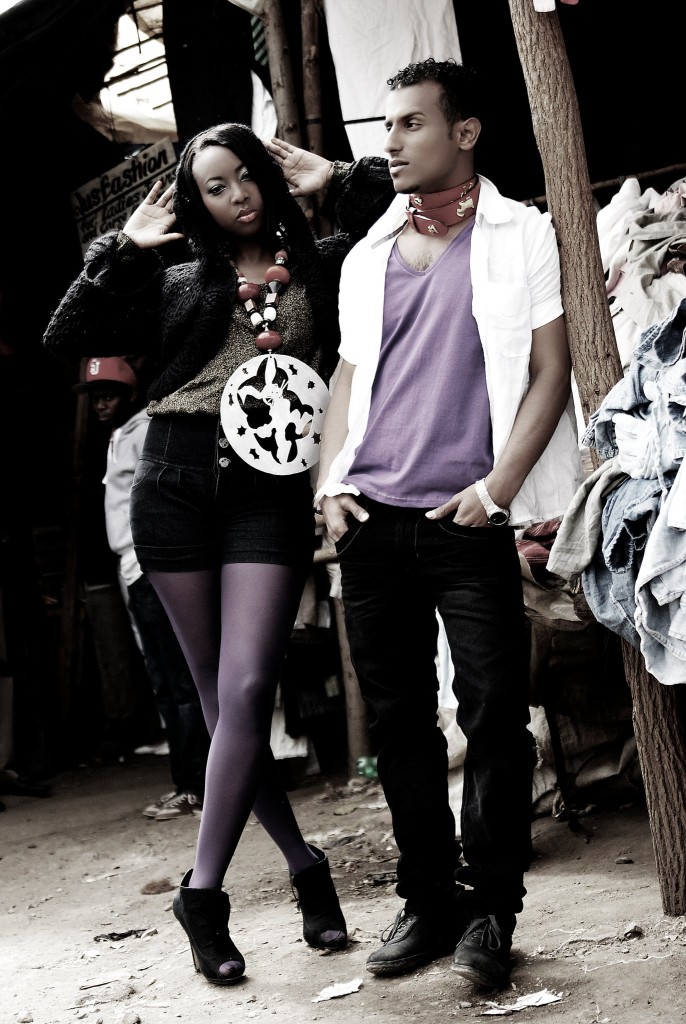
[su_dropcap style=”simple”]A[/su_dropcap] trending issue in all media including the traditional ones here in Kenya has recently been the agony of the local garment industries over the claim that the second-hand clothing sales are posing a threat to their businesses. And indeed, the African fashion business would not be the same without the thrift markets, which you find in every village, big and small, and which also thrive in all major cities. And I for one love thrift shopping and visit my favorite markets in Nairobi whenever I can and always make some amazing finds, including designer labels and other fashionable items from high street shops abroad.
But the local industries are fighting hard to have the government ban these sales which they perceive as unfair competition and this strategy was recently supported by the Chairperson of the East African Legislative Council (EACL) at a presentation at the Mount Kenya University saying that the sales have choked the East African textile.
photographed by Leon Muli at Toi Market Nairobi
styled by Nancie Mwai
However, as I see it, if local garment manufacturers could put equally stylish products on the market at comparable prices they should be able to grab an increasing share of the market for affordable clothing inter alia by benefitting from the smoothly functioning distribution channels already in place bringing the goods to the flourishing thrift markets, which offer good quality clothing in sometimes trendy designs at prices affordable to most people. And at some point, I began to wonder about how it all ended up in a tiny stall in Nairobi. It became a fascinating story, which I find deserves to be shared.
Let’s think about a fashionable off-shoulder top designed by a famous designer and hanging in an exclusive section of a boutique on Oxford Street. It’s a cool day and an elegant lady walks in to browse around, her ever watchful and fashion trained eyes zoom in on our designer top displayed prominently in the middle of the shop. It’s love at first sight, and she feels she just cannot leave without it. It only takes her a few minutes to try it on and compare the fit with a few others before her mind is made up. Her credit card is swiped and out she walks proudly carrying her newest acquisition. Next day she wears her designer top for a glamorous function. It has served its purpose. It ends up in her closet where it sits for some time, until sooner or later it and a few other statement pieces, which she feels she can only wear once, have to make room for the next purchases.
Somehow you don’t just throw such a top into a shredding basket to be sent into blanket fill, so she sends it to one of the collection points set up in shopping malls , parking lots, and other strategic locations by Oxfam, the Salvation Army, Humana People to People, TRAID (Textile Recycling for Aid and International Development), and other similar organizations. They make quite a lot of money for their respective charities through the sale of such items, which have been donated by kind and generous people. Some sell exclusively from their own shops in Europe and the US while others prefer to generate their income through export, which is the route our top will take.
Sorting by category, grading by quality standards, packing in huge bales and eventually shipping abroad is these days carried out by large specialized companies, which buy the clothing items from the charity collectors and resell them to wholesalers and distributors in a wide range of developing countries. Ropa-Usada based in Valencia, Spain is one of the leading in this field. They also export new clothes from stock clearances of factories and department stores, which they procure at minimal costs since a significant aspect of their strategy is to support and facilitate business development in the countries of final destination. In their huge warehouse they sort, grade and pack the clothes for export to Africa and South America in 45 kg bales. They have three quality grades: Extra cream, first quality and standard quality and a variety of categories including ladies clothing, men’s clothing, children’s clothes, belts, bags and shoes.
After having been rocked on the ocean for a long time, the containers finally reach their destination, which in our case is the port of Mombasa. Now this is when the journey of Mtumba, as we call second hand clothes in Kenya, become a serious business opportunity for our local traders and transporters. A major importer like Gikomba Mombasa Second Hand Clothes will offload the containers in the port and transport full container loads of bales to central distribution points in Nairobi and other major cities, where the bales are sold to local distributors, who in turn will deliver them to individual traders based on their specific orders.
We have now come full circle when the bale is brought to the retail trader’s stall and opened in front of my eyes, unless I arrive there in the afternoon when some pieces have already been unpacked, priced and put on hangers and shelves, while some unsorted piles are still lying around. I actually love to dig through such piles. It’s such a thrill when I finally discover that treasure (that designer top for instance) and walk away with a huge bargain of a nearly not worn designer top bought at a tiny fraction of its original price. I recently posted a video giving you a taste of the atmosphere at Toi Market and some thrift shopping tips here.
The story of second-hand clothing or Mtumba has many happy endings, including our own personal excitement of adding another beautiful piece of clothing into our closets.
Environmental degradation is reduced and carbon emissions minimized by reusing old clothes. Economic development is supported through the creation of jobs both in the formal and informal sector in the recipient countries while the local trade stimulates economic activity.
Social development is boosted through the channeling of surplus earnings from the trade in Europe and the USA into humanitarian projects and other charitable activities, Plus a lot of people in developing countries get the opportunity to buy quality clothing at affordable prices; clothing which otherwise would be out of their economic reach or simply not available in many rural communities.







